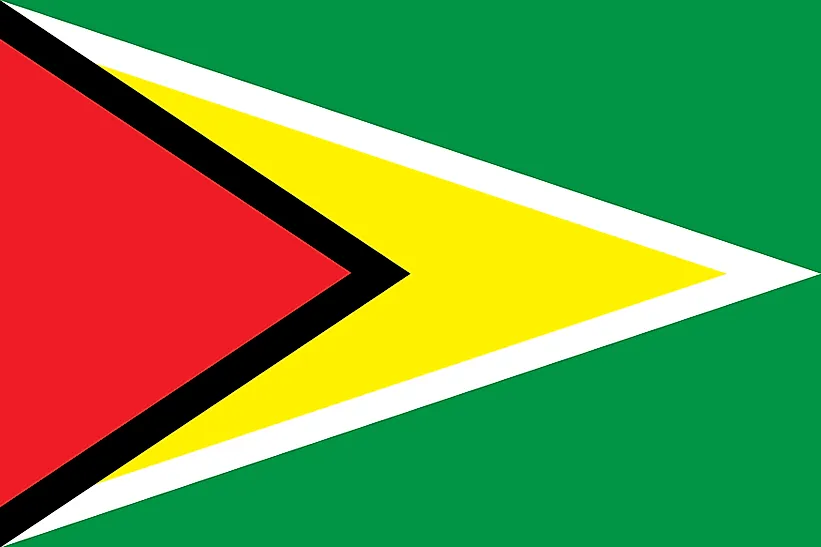
Guyana
| Continent | Americas |
| Capital | Georgetown |
| Population | 735,909 |
| GDP | $6.05 Billion |
| GDP per Capita | $7,900 |
| Dialing Code | +592 |
| ISO Code (2-letter) | GY |
| ISO Code (3-letter) | GUY |
Guyana Landscapes






About Guyana
Welcome to Guyana, South America’s only English-speaking country, where pristine rainforests meet Caribbean culture. With approximately 790,000 people occupying 214,969 square kilometers, Guyana combines vast natural resources with rich cultural diversity, earning its indigenous name meaning “Land of Many Waters.”
Geographic Features and Natural Beauty
Guyana’s geography encompasses diverse landscapes, from coastal plains through dense rainforest to the Pakaraima Mountains, including the famous Mount Roraima. The country maintains one of the world’s highest percentages of forest cover, with over 85% of its territory covered in pristine rainforest.
The landscape features spectacular waterfalls, including Kaieteur Falls, the world’s largest single-drop waterfall by volume. The country’s extensive river system includes the mighty Essequibo, Demerara, and Berbice rivers, which have historically shaped development and commerce.
Protected areas include Iwokrama Forest, a model for rainforest conservation and sustainable use, and the Kanuku Mountains, home to diverse wildlife including jaguars and harpy eagles. The country’s varied ecosystems support remarkable biodiversity, earning it recognition as part of the Guiana Shield.
Cultural Heritage and Traditions
Guyanese culture reflects a unique blend of Caribbean, South American, and Asian influences, creating a distinctive “Six Peoples” heritage encompassing Indigenous, African, Indian, Chinese, Portuguese, and European traditions.
Traditional arts include Indigenous crafts like weaving and pottery, alongside Indo-Guyanese music and dance forms such as chutney. The country’s folklore combines elements from various cultural traditions, while festivals like Mashramani celebrate national identity.
Guyanese cuisine features diverse influences, from curry and roti reflecting Indian heritage to pepperpot, an Indigenous Amerindian dish. Traditional crafts include woodcarving, particularly among Indigenous communities, and textile arts.
Historical Journey
Guyana’s history spans from Indigenous settlements through Dutch and British colonization to independence in 1966. The colonial period saw the introduction of various peoples through slavery and indentureship, creating today’s multicultural society.
Post-independence years saw various political and economic challenges, while recent oil discoveries have opened new development opportunities. The country’s transition to a republic in 1970 marked a significant milestone in its journey.
Modern Economic Landscape
Today’s Guyanese economy is experiencing rapid transformation due to major offshore oil discoveries. Traditional sectors include agriculture (particularly sugar and rice), mining (gold and diamonds), and forestry.
Recent development focuses on sustainable resource management, infrastructure improvement, and economic diversification. The country’s emerging oil sector presents both opportunities and challenges for balanced development.
International Relations and Global Position
Guyana plays an active role in Caribbean (CARICOM) and South American regional organizations. The country’s position between the Caribbean and South America, combined with its natural resources, enhances its strategic importance.
Did You Know?
• Guyana is home to Kaieteur Falls, the world’s largest single-drop waterfall by volume?
• The country has one of the highest rates of biodiversity in the world?
• Guyana is the only South American nation where English is the official language?
• The country’s recent oil discoveries are among the largest worldwide in recent years?
Conclusion
Guyana represents a unique fusion of South American geography and Caribbean culture. From its pristine rainforests to its diverse cultural heritage, from its historical legacy to its emerging economic opportunities, Guyana continues to evolve while maintaining its distinctive character. As it addresses challenges including sustainable development and resource management, Guyana remains committed to balancing economic growth with environmental preservation and cultural diversity.